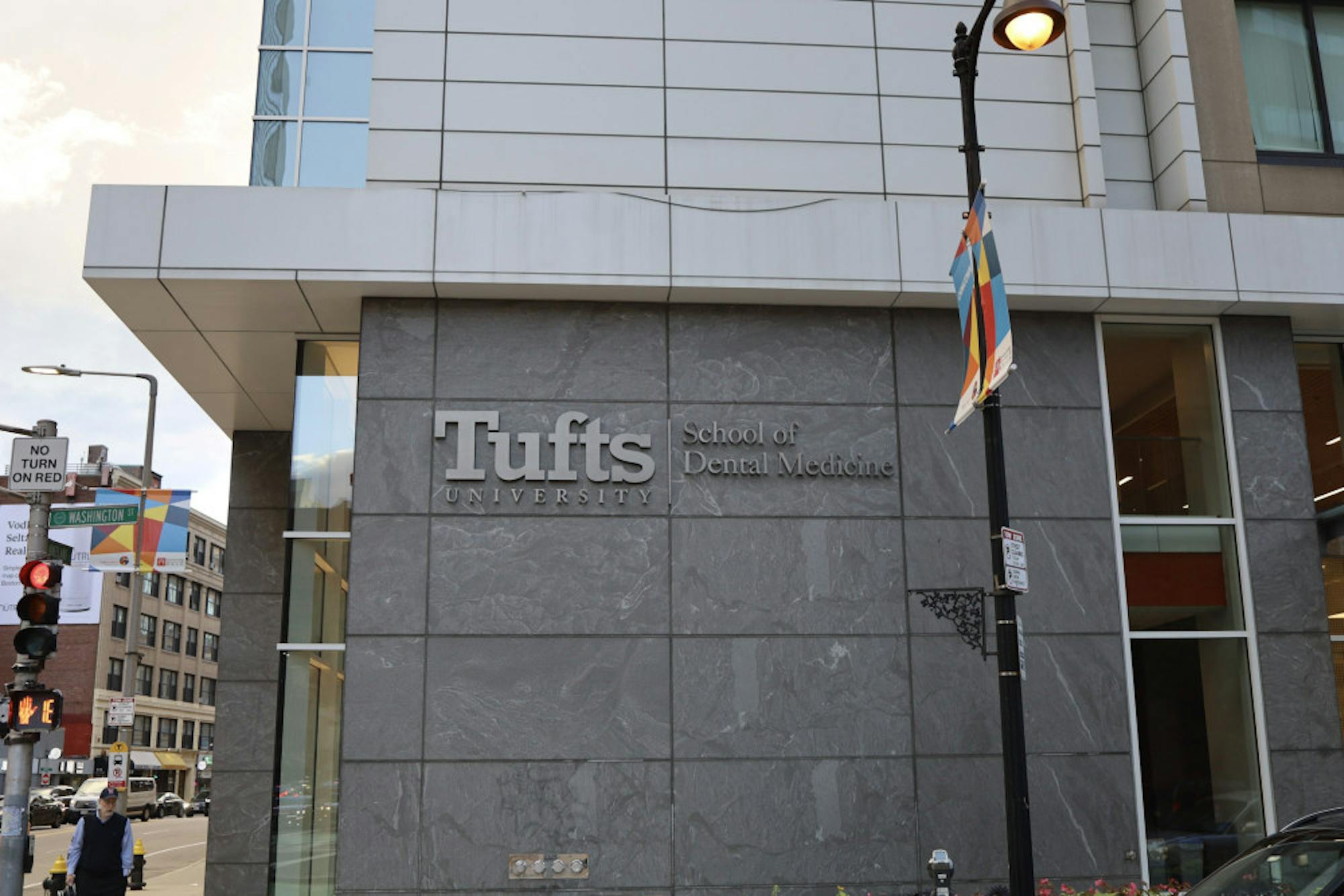Peter Arsenault, professor and division head of operational dentistry at the Tufts School of Dental Medicine, helped influence a new national standard for healthcare workers that seeks to fix a decades-old flaw in personal protection equipment, or PPE, along with a team of experts. Passed in July, this national regulation creates new protections against the infamous “bottom gap.”
Arsenault explained that the "bottom gap" is a breach in modern medical masks created by the space between the lower rim of medical glasses and the top edge of the mask, where the material is cheaper and more vulnerable.
While PPE has been under the spotlight due to the COVID-19 pandemic, Arsenault first encountered problems with the current setup as far back as several years agowhen he had his own medical mishap.
“I was removing the patient's filling that was defective, and in the process ... a piece of tooth material entered into my eye," Arsenault said. "And I actually ended up having to take a trip to the emergency room."
His personal accident made him ask just how many others had suffered a similar fate, and he contacted his old friend and mentor Amad Tayebi to research more. What the pair found shocked both of them.
"A lot of literature ... says that 70% of all dentists some time in their career may receive some degree of ocular trauma," Arsenault said. "And that's associated with the bottom gap."
Arsenault decided to work with Tayebi, professor emeritus of plastic engineering at University of Massachusetts, Lowell, to test out the modern masks and create an updated one for the future. They recruited Marileen Nancy Aiken, Tayebi’s daughter, who was involved in the business aspects of the project.
Meanwhile, Arsenault and Tayebi recorded a series of experiments with mannequins and sprays that demonstrated the problem with the bottom gap. Tayebi and Arsenault’s research, combined with the business savvy of Aiken and other collaborators, resulted in a collective reporton the bottom gap as well as a prototype mask that would theoretically solve the issue.
The team eventually reached the phase where they needed to prove how the new masks would work. They contacted Romesh Nalliah, an old friend of Arsenault’s and professor at the University of Michigan School of Dentistry, whose previous position at the Harvard School of Dental Medicine helped provide the proof they needed to validate their efforts.
“All we did was pilot the masks with bottom gap modifications at Harvard School of Dental Medicine to gain initial feedback for Dr. Arsenault and his team to keep improving the prototype,” Nalliah wrote in an email to the Daily.
The testing proved successful in time, and the team published their findings. Eventually, the National Institute of Occupational Safety and Health (NIOSH) noticed the report and decided to investigate further. After they replicated the team’s research and methods, NIOSH determined that the bottom gap problem and proposed solution were legitimate and worked with the American National Standards Institute (ANSI) to propose a new regulation for protective equipment.
Finally, the ANSI passed ANSI/ISEA Z87.62-2021, a new standard for face protection from fluids, pathogens, bloodborne pathogens and general debris that will reduce future bottom gap problems and harm to healthcare workers.
Aiken detailed the importance of ANSI standards.
"ANSI standards are considered the 'gold standard' in safety guidance,” Aiken said. “Compliance with the new ANSI standard is evidence that an organization is following best practices with respect to the eye protection of its employees and/or students. Moreover, many industry groups rely on the ANSI standards for guidance and can adopt ANSI standards as part of their own standards."
While ANSI standards are voluntary, they have a wide-ranging effect on workplace safety. Z87.62 doesn't just apply to dentists but to nearly all health care providers from veterinarians to nurses. Such effects have brought recognition to Arsenault's team.
"We've been recognized and awarded through a group called OSAP, which is … kind of like the governing body in dentistry who looks at infection control," Arsenault said. "And we received an award called the James Cottone Award a few years ago."
Since this recognition, Arsenault has shifted his focus towards patient eye safety.
“It's not required that a patient has to wear safety eyewear," Arsenault said. "However, at the dental school, all dental schools and most private practices, all do protect patients by wearing some sort of protective eyewear.”
He claimed that the main motivator behind this new direction came to him while attending an OSAP conference and being moved by the story of Jenn Morrone, a young mother who lost her eye in a dental mishap.
Nalliah expressed his praise for Arsenault's achievements.
“Dr. Arsenault was ahead of his time," Nalliah said. "His pursuit of better protection for his fellow faculty, students and staff prepared Tufts well for the aerosol threat of the pandemic.”






